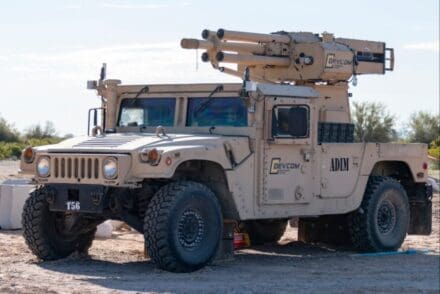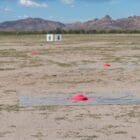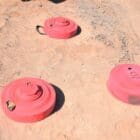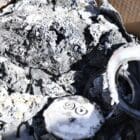Landmines have been used in warzones for decades. They are placed strategically in the pathway, both surface-laid and underground to explode and deter passage to an area. In those decades various methods have been used to detect and defuse them yet each year thousands of people are killed by mines.
The U.S. Army is exploring methods to detect and neutralize these hazards at standoff creating a passable vehicle wide lane while reducing risk to the breaching force.
Amit Makhijani with the office of Project Manager Close Combat Systems explained “We are doing dynamic live fire testing on one potential concept as part of the Technology Maturation and Risk Reduction efforts.”
That concept is the GOBLN short for Ground Obstacle Breaching Lane Neutralizer. It allows remote detection and neutralization— meaning the warfighter would not be at risk.
The concept is comprised of three main components. A mortar-based launcher system integrated on a vehicle platform, a small unmanned aerial system hosted detection system, and a neutralizing munition.
For this dynamic neutralization test at Yuma Test Center (YTC) the team focused on the neutralization aspect.
“What we are looking at is not what the gun is doing, it is what is it doing on the other end. What are the effects on the mines we are shooting at,” explained YTC Test Officer Brett Bowman.
YTC provided a wide area laid out with six lanes of high explosive mines with inert fuzes comprised of both US M-15 and foreign TM-62M. The team placed the mines strategically atop a tarp to track how the mortar shrapnel hit each mine and the surrounding area.
“When we go out an assess, we mark each target, so when we fire on them again, we know which ones it hit on the first time and we will know the difference between the first time and the second,” explained GOBLN Test Lead Raj Nattanmai with the U.S. Army’s DEVCOM Armaments Center (AC).
Bowman adds, “We are getting the observer data to know where they impacted, then after each sequence we go out and do inspections to see the damage on targets and access how we did.”
This allows the DEVCOM AC personnel to better model the down range effects with real world shot data and adjust the launcher as needed.
In this proof-of-concept phase, the team is looking for specific criteria.
Nattanmai described, “We want the shrapnel to come in and pierce the mines so that it damages either the fuse or sets it off. The other possibility is that it creates a reaction and causes it to burn.”
Nattanmai showed the team a TM 62 mine that was completely burned and explained, “That one didn’t blow up, it burned. It set on fire and charred up basically. That’s the ideal neutralization. That’s what we want all the targets to do.”
Bowman came up with the placement of the mines to provide efficient testing in between mandatory safety wait times.
“They were originally going to have one mine lane, we shoot, go out inspect, and come back. We can’t do that because of the wait times. So, what I did was set this one up so we can have multiple mine lanes, fire multiple engagements at a time, then that way we can go out and inspect them after the certain amount of wait times.”
This method shorted the firing window to three weeks versus a month and a half. When all was said and done the team fired more than 250 mortars at targets.
The GOBLN is one of the many solutions the Army is testing to see which the most effective solutions are to meet modern threats.
Army Futures Command Capabilities Developer Shawn Anders remarks, “In the concept of the future, we are not talking about what we can do today. What we are trying to do, the next 10 years, 20 years down the road and have that forecast. So today is just our baseline of multiple systems, for consideration for the future. And like Maj. Thomas Fite said, ‘Breaching Ain’t Easy.’”
By Ana Henderson





